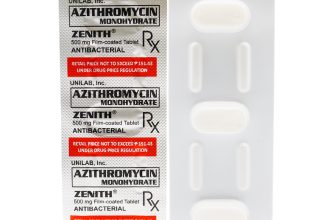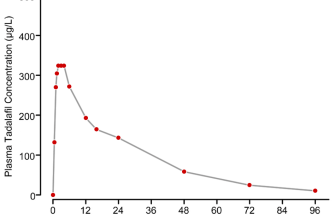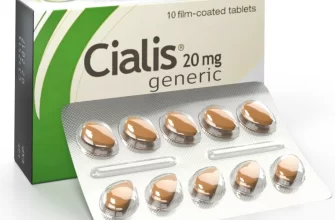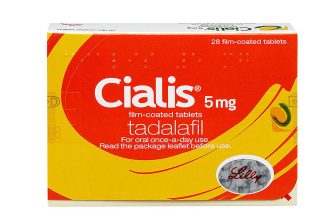Accutane, a well-known treatment for severe acne, comes in various forms that can meet different patient needs. Capsules are the most common way to administer this medication, typically taken once or twice daily with food to enhance absorption. Regular dosing helps maintain consistent blood levels, which is critical for effectiveness.
In addition to capsules, there are generic alternatives available that may offer a cost-effective option while providing the same active ingredient, isotretinoin. Patients should consult with their healthcare provider to explore these alternatives to find the best fit for their treatment plan.
Another form gaining attention is the liquid formulation. This option may be favored by individuals who have difficulty swallowing pills. Liquid Accutane allows for flexible dosing and can be adjusted based on individual needs, ensuring that therapy is accessible.
No matter the form, adherence to the prescribed regimen is crucial for achieving desired results and minimizing side effects. Regular follow-ups and communication with a healthcare professional will ensure that treatment remains on track and any concerns are addressed promptly.
- Forms of Accutane
- Available Forms
- Dosage Recommendations
- Oral Capsule Form: Dosage and Administration
- Administration Guidelines
- Monitoring and Duration of Treatment
- Topical Gel: Benefits and Application Techniques
- Comparing Different Strengths of Accutane Capsules
- 10mg and 20mg Capsules
- 30mg and 40mg Capsules
- Potential Side Effects of Various Forms of Accutane
- Topical Treatments
- Long-term Considerations
- Storage Recommendations for Accutane Products
- Secure Packaging
- Avoid Bathrooms and Kitchens
- Patient Considerations: Choosing the Right Form of Accutane
- Form Options and Their Benefits
- Practical Considerations
- Recent Developments and Innovations in Accutane Formulations
Forms of Accutane
Accutane, commonly known as isotretinoin, is available in several forms that cater to different patient needs. Understanding these options ensures effective treatment for severe acne.
Available Forms
- Capsules: Typically, Accutane is sold in capsule form. These are taken orally with food to enhance absorption. Dosage usually ranges from 0.5 to 2 mg/kg per day, depending on the severity of acne and patient response.
- Strength Variations: Accutane can come in different strengths, such as 10 mg, 20 mg, and 40 mg. Your healthcare provider will determine the best strength based on individual needs.
Dosage Recommendations
- Follow your dermatologist’s instructions regarding dosage. Starting doses may begin around 0.5 mg/kg per day.
- Monitor progress regularly. Dosage adjustments can happen based on the reduction of acne and any side effects experienced.
- Complete the full course, typically lasting 16 to 24 weeks, to maximize benefits.
Explore each form fully during consultations. Your healthcare team can clarify specific recommendations and ensure a tailored approach.
Oral Capsule Form: Dosage and Administration
For adults and adolescents, the typical initial dosage of isotretinoin capsules is 0.5 mg/kg per day. A healthcare provider will adjust this based on individual response and tolerance, often increasing it to 1 mg/kg per day if necessary. The maximum recommended dosage does not usually exceed 2 mg/kg per day.
Administration Guidelines
Take the capsules with food to enhance absorption. Swallow each capsule whole; do not crush or chew them. Maintain consistent use by taking the capsules at the same time each day. This helps in establishing a routine and prevents missed doses.
Monitoring and Duration of Treatment
Your healthcare provider will monitor your progress regularly throughout treatment. The usual course of treatment lasts 15 to 20 weeks, but this may vary. Always communicate any side effects or concerns to your provider promptly.
Topical Gel: Benefits and Application Techniques
Topical gel offers targeted action, delivering medication directly to the affected area while minimizing systemic absorption. This localized treatment helps in reducing potential side effects compared to oral forms of medications. Additionally, gels generally have a lighter texture, which often makes them more comfortable for daily use.
To apply topical gel, ensure the skin is clean and dry. Squeeze a small amount of gel onto your fingertip or palm, then gently apply it to the problem area, spreading it in a thin layer. Avoid heavy rubbing; a light patting motion works effectively. Allow the gel to dry completely before covering the area with clothing.
For optimal results, follow these tips: apply the gel at the same time each day to maintain consistent levels in the skin, and avoid applying other skincare products immediately before or after the gel to prevent interference. Always consult your dermatologist to tailor the application routine based on your specific skin type and condition.
Be mindful of using the gel in a well-ventilated area to avoid inhaling any fumes. Wash your hands after application to prevent accidental contact with sensitive areas, especially the eyes. In cases of irritation or allergy, discontinue use and seek professional advice.
Comparing Different Strengths of Accutane Capsules
Accutane capsules are available in various strengths, allowing for tailored treatment plans based on individual needs and responses. The common strengths include 10mg, 20mg, 30mg, and 40mg. Selecting the appropriate strength involves considering factors such as the severity of acne, patient weight, and previous treatment history.
10mg and 20mg Capsules
The 10mg and 20mg capsules are often prescribed for patients with mild to moderate acne or those who are sensitive to medication. Starting with a lower dose can ease the body into treatment and helps monitor for side effects. Patients generally see improvements within 8-12 weeks. Regular follow-ups are crucial to determine if an increase in dosage is necessary for better results.
30mg and 40mg Capsules
For patients with more severe acne, the 30mg and 40mg capsules may be more appropriate. These strengths provide a stronger dose that can lead to faster clearing of stubborn acne lesions. The average course duration remains similar, around 15-20 weeks, and careful monitoring for side effects is essential due to the increased potency. A healthcare provider may recommend these higher strengths especially for those with significant scarring or persistent nodular acne.
Ultimately, the best approach balances minimizing side effects while maximizing effectiveness. Regular consultations with a healthcare professional will guide adjustments in dosage and help monitor treatment efficacy. Adjusting the strength of Accutane based on feedback ensures optimal outcomes in acne management.
Potential Side Effects of Various Forms of Accutane
Accutane, particularly isotretinoin, presents potential side effects that differ depending on the formulation. Understanding these variations ensures informed decision-making during treatment. The oral capsule form is commonly associated with dry skin, lips, and mucous membranes. Users often find moisturizers helpful in managing these symptoms.
Topical Treatments
Topical formulations may induce localized irritation, redness, or peeling. Users should apply a small amount initially to gauge tolerance and gradually increase usage as the skin adapts. It’s advisable to combine these treatments with gentle cleansers to minimize irritation.
Long-term Considerations
Monitoring liver function becomes crucial, especially in oral administration. Regular blood tests help detect any liver abnormalities. Users might experience changes in mood or increased anxiety; open communication with healthcare providers can address any mental health concerns. Women should exercise caution regarding pregnancy due to increased risks of birth defects associated with isotretinoin.
Stay attentive to these potential side effects throughout the treatment process. Adjustments in approach or formulation can lead to a more comfortable experience. Always consult with your healthcare provider for tailored advice based on individual reactions to the medication.
Storage Recommendations for Accutane Products
Store Accutane products in a cool, dry place away from direct sunlight. A temperature between 15°C to 25°C (59°F to 77°F) is ideal for maintaining their integrity. Avoid exposing the medication to extreme temperatures, including freezing conditions, as this can affect its potency.
Secure Packaging
Keep Accutane in its original packaging until use. This packaging protects the medication from moisture and light, which can degrade its effectiveness. Ensure the cap is tightly closed after each use to prevent contamination.
Avoid Bathrooms and Kitchens
Avoid storing Accutane in the bathroom or kitchen, where humidity and temperature fluctuations may occur. Instead, consider a dedicated drawer or cabinet with consistent conditions. If traveling, carry the medication in a temperature-controlled bag to prevent exposure to heat or cold during transit.
Patient Considerations: Choosing the Right Form of Accutane
Selecting an appropriate form of Accutane directly impacts treatment success and patient comfort. Patients should consider lifestyle factors, dosing frequency, and any underlying medical conditions. Each form–capsules, soft gels, or topical formulations–offers distinct advantages that may align better with individual needs.
Form Options and Their Benefits
Accutane is available in multiple formulations. Capsules are typically the standard choice, offering consistent dosing and better absorption. Soft gels can be easier to swallow for those with difficulty taking traditional pills. Topical options provide localized treatment and may suit patients seeking a non-systemic approach.
Practical Considerations
Patients on Accutane should monitor their adherence to the treatment plan. If daily dosing seems challenging, opting for forms that allow for greater flexibility may enhance consistency. Additionally, discuss with the prescribing doctor any allergies or sensitivities that could affect form selection.
| Form | Dosing Frequency | Advantages |
|---|---|---|
| Capsules | Daily | High absorption, supported by extensive research |
| Soft Gels | Daily | Easier to swallow, suitable for those with swallowing difficulties |
| Topical | As needed | Direct application, localized effects, reduced systemic exposure |
Engaging in an open dialogue with healthcare providers about personal preferences and experiences can lead to tailored solutions and a more satisfying treatment experience. Careful consideration of these factors will guide the decision toward the most suitable Accutane form.
Recent Developments and Innovations in Accutane Formulations
Recent innovations in Accutane formulations have introduced several promising alternatives that enhance patient experience and treatment efficacy.
- Microencapsulated Formulations: This technology improves drug delivery by protecting the active ingredients, allowing for a more controlled release. Patients often report fewer side effects due to this gradual absorption, which mitigates systemic exposure.
- Oral Soluble Films: These films dissolve in the mouth, providing a convenient option for those who struggle with traditional pills. This innovative approach enhances adherence and offers a pleasant taste, making it easier for younger patients to comply with treatment regimens.
- Combination Therapies: New combinations involving Accutane with topical agents like retinoids or antibiotics show improved outcomes for severe acne. This dual-action strategy reduces the overall treatment duration while maximizing effectiveness against stubborn acne.
- Personalized Dosing: Recent studies advocate for individualized dosing strategies based on genetic factors and acne severity. This tailored approach helps optimize treatment results and minimizes adverse effects, leading to a better overall experience for patients.
- Long-Acting Formulations: Innovations in long-acting injectable forms of Accutane are under research to decrease the frequency of dosing. This method promises to enhance convenience and improve adherence, particularly in patients hesitant to take daily medication.
- Topical Options: Investigations into topical formulations of Accutane highlight their potential for localized treatment with reduced systemic side effects. These options could be particularly appealing for patients with mild to moderate acne.
Staying informed about these advancements can help clinicians provide the best possible care for acne patients, ensuring they receive effective and manageable treatment options. Regular consultations with dermatology experts will yield optimal results tailored to individual needs.








